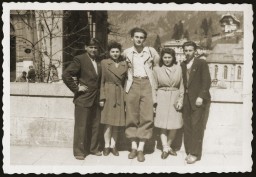You searched for: 回国加速器【输入∶海归returnees加速器】海归returnees加速器app海归returnees加速器publishers海归returnees加速器top海归returnees加速器published海归returnees加速器apps海归returnees加速器and海归returnees加速器more海归returnees加速器in海归returnees加速器United海归returnees加速器States海归returnees加速器Google海归returnees加速器Play海归returnees加速器Store
<< Previous | Displaying results 2301-2350 of 2676 for "回国加速器【输入∶海归returnees加速器】海归returnees加速器app海归returnees加速器publishers海归returnees加速器top海归returnees加速器published海归returnees加速器apps海归returnees加速器and海归returnees加速器more海归returnees加速器in海归returnees加速器United海归returnees加速器States海归returnees加速器Google海归returnees加速器Play海归returnees加速器Store" | Next >>
-
Yosel Coller
ID CardOne of six children, Yosel was raised in a religious Jewish family in Lodz, an industrial city in western Poland. His father was a businessman. At the age of 6, Yosel began attending a Jewish day school. His two older sisters attended public school in the morning and religious school in the afternoon. Yosel spent much of his free time playing soccer with his brothers. 1933-39: Yosel's family lived in a modest house in the northern section of Lodz. He went to a Jewish day school and had many friends there.…
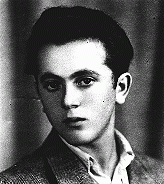
-
Renate Guttmann
ID CardRenate, her twin brother, Rene, and their German-Jewish parents lived in Prague. Shortly before the twins were born, Renate's parents had fled Dresden, Germany, to escape the Nazi government's policies against Jews. Before leaving Germany to live in Czechoslovakia, Renate's father, Herbert, worked in the import-export business. Her mother, Ita, was an accountant. 1933-39: Renate's family lived in a six-story apartment building along the #22 trolley line in Prague. A long, steep flight of stairs led up to…
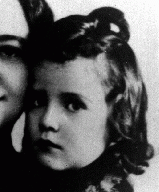
-
Henoch Kornfeld
ID CardHenoch's religious Jewish parents married in 1937. His father, Moishe Kornfeld, and his mother, Liba Saleschutz, had settled in Kolbuszowa, where Henoch's mother was raised. There, Liba's father bought the newlyweds a home and started his new son-in-law in the wholesale textile business. 1938-39: Henoch was born in late 1938, and was raised among many aunts, uncles and cousins. Around Henoch's first birthday, Germany invaded Poland and soon reached Kolbuszowa. Polish soldiers on horses tried to fight…
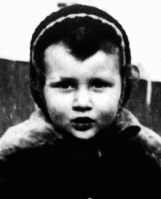
-
Rene Guttmann
ID CardRene, his twin sister, Renate, and their German-Jewish parents lived in Prague. Shortly before the twins were born, Rene's parents had fled Dresden, Germany, to escape the Nazi government's policies against Jews. Before leaving Germany to live in Czechoslovakia, Rene's father, Herbert, had worked in the import-export business. His mother, Ita, was an accountant. 1933-39: Rene's family lived in a six-story apartment building along the #22 trolley line in Prague. A long, steep flight of stairs led up to…

-
Blimcia Lische
ID CardBlimcia's parents were religious Jews. Her father, Shaya David, and her mother, Malcia Saleschtz, had settled in Kolbuszowa, where Blimcia's mother had been raised. There, Malcia's father bought the newlyweds a home and started his new son-in-law in the wholesale flour business. 1933-39: Blimcia was born in 1938, and was raised among many aunts, uncles and cousins. Around Blimcia's first birthday, Germany invaded Poland and soon reached Kolbuszowa. Polish soldiers on horses tried to fight against the…

-
Leif Donde
ID CardLeif was born to a Jewish family in the Danish capital of Copenhagen. Both of his parents were active in the Jewish community there, and his father owned a small garment factory. The majority of Denmark's 6,000 Jews lived in Copenhagen before the war. Despite its size, the city's Jewish population supported many Jewish organizations, often aiding Jewish refugees from all over Europe. 1933-39: Leif went to a Jewish nursery school, which was next to a girls' school in Copenhagen. He didn't like his school…
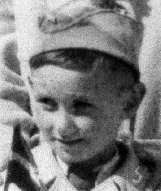
-
Simone Arnold
ID CardSimone was born in the Alsatian village of Husseren-Wesserling. In 1933 when she was three, her parents moved to the nearby city of Mulhouse. There, her father worked in a printing factory. Her parents were Jehovah's Witnesses and instilled in her the teachings of the faith. Above all, she was taught the importance of placing obedience to God before allegiance to any earthly authority. 1933-39: Simone grew up in a home full of love. Her parents would read the Bible to her. Their life included music, art,…
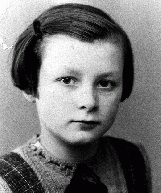
-
Judith Margareth Konijn
ID CardJudith was the younger of two children born to religious, middle-class Jewish parents. Judith's mother, Clara, was Sephardic, a descendant of Jews who had been expelled from Spain in 1492. Her father, Lodewijk, was a traveling representative for a firm based in Amsterdam. The family lived in an apartment in a new section of Amsterdam on the southern outskirts. 1933-39: Judith attended grade school with her cousin Hetty who was the same age. Judith loved to study. Her mother taught piano to students who…
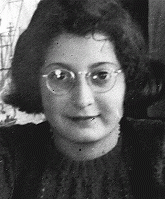
-
Herschel Gerszonowicz
ID CardThe fourth of eight children, Herschel was born to Jewish parents in south central Poland. His father was a machinist and locksmith. Herschel belonged to the Zionist youth organization, Ha Shomer ha-Tsa'ir, and played soccer for the Jewish team. When he was 14 years old, he left school to become apprenticed to his stepsister's father who was a tailor. 1933-39: Herschel was working as a tailor in Miechow when, on September 1, 1939, the German army invaded Poland. His parents decided that he and his…

-
Susanne Ledermann
ID CardSusanne was the younger of two daughters born to Jewish parents in the German capital of Berlin. Her father was a successful lawyer. Known affectionately as Sanne, Susanne liked to play with her sister on the veranda of her home and enjoyed visiting the Berlin Zoo and park with her family. 1933-39: After the Nazis came to power in January 1933, it became illegal for Jewish lawyers to have non-Jewish clients. When Susanne was 4, her father's law practice closed down and the Ledermanns moved to the…

-
Ruth Gabriele Silten
ID CardGabriele was the only child of Jewish parents living in the German capital of Berlin. Her grandfather owned a pharmacy and a pharmaceuticals factory, where Gabriele's father also made his living. 1933-39: In 1938 the Nazis forced Ruth's grandfather to sell his factory and pharmacy for very little money to an "Aryan" German. After that, her father decided they should move to Amsterdam where it was safer for Jews. She was 5 years old and wanted to stay in Berlin. She didn't understand why she had to leave…
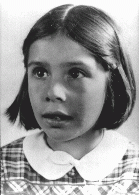
-
Arlette Waldmann
ID CardArlette's Russian-Jewish mother and Romanian-Jewish father had studied medicine together in Paris. After finishing medical school, they married and decided to set up practice in Broncourt, a farming village of 300 inhabitants in northern France. 1933-39: Arlette's father was an old-fashioned doctor who made housecalls, by bicycle at first, then on a motorcycle, and finally, in a car. His patients looked forward to seeing him and held him in high esteem, always offering him coffee and schnapps. Even after…
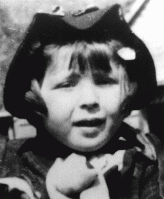
-
Leo Falkenstein
ID CardOne of three children, Leo grew up in the small town of Hochneukirch, 20 miles northwest of Cologne. As an adult, Leo entered his father's cigar manufacturing business, "Isak Falkenstein and Sons." Leo and his wife, Bertha, lived in a house next to Leo's parents. Leo and Bertha had six children whom they raised in the Jewish faith. 1933-39: Leo and Bertha's daughter Johanna has brought her two girls to live with them for a while here in Hochneukirch. Johanna's husband, Carl, has been having trouble…

-
Bertha Falkenstein
ID CardOne of two children, Bertha grew up in the small village of Bergheim where her father was a farmer. After she married Leo Falkenstein, the couple settled in Hochneukirch, 20 miles northwest of Cologne. There her husband was employed in his father's cigar manufacturing business, "Isak Falkenstein and Sons." Bertha and Leo had six children whom they raised in the Jewish faith. 1933-39: In 1937 Bertha's daughter Johanna brought her two girls to live briefly with them in Hochneukirch. Johanna's husband, Carl,…

-
Agnes Allison describes the Hitler Youth movement at her school
Oral HistoryAgnes Allison (née Agnes Suzannah Halàsz) was born on October 28, 1926, in Budapest, Hungary, to Ilona Gero and Robert Halász. She had a younger sister, Judy. Agnes attended a private German school established for the children of diplomats. There was a Hitler Youth movement at the school. Agnes and her family were forced out of their home following the German occupation of Hungary. She went into hiding in December 1944. Beginning in 1933, the Hitler Youth and the League of German Girls had an…
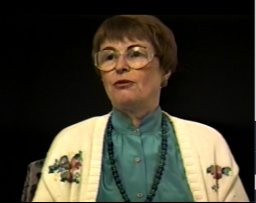
-
Auschwitz
Animated MapView an animated map showing key events in the history of the Auschwitz camp complex in German-occupied Poland.

-
Mass Shootings at Babyn Yar (Babi Yar)
ArticleAt Babyn Yar in late September 1941, SS and German police units and their auxiliaries perpetrated one of the largest massacres of World War II.

-
Death March from Auschwitz
Timeline EventJanuary 17, 1945. On this date, SS units evacuated prisoners from the Auschwitz camp complex as Soviet forces approached.
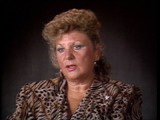
-
Public Humiliation
ArticleThe Nazis used public humiliation tactics to degrade their victims and to reinforce Nazi racial ideology for German citizens and populations under Nazi occupation.

-
Kyiv (Kiev) and Babyn Yar (Babi Yar) - maps
Media EssayIn late September 1941, SS and German police units and their auxiliaries perpetrated one of the largest massacres of World War II. It took place at a ravine called Babyn Yar (Babi Yar) just outside the Ukrainian capital city of Kyiv (Kiev).
-
Einsatzgruppen - Photographs
Media EssayThe Einsatzgruppen (task forces or special action groups) were units of the Security Police and SD. They are sometimes referred to as "mobile killing squads." The Einsatzgruppen were a consistently brutal perpetrator of Nazi occupation policies. They are best known for their role in the massacres of Jews following the German attack on the Soviet Union.
-
Einsatzgruppen - Animated Map/Maps
Media EssayThe Einsatzgruppen (task forces or special action groups) were units of the Security Police and SD. They are sometimes referred to as "mobile killing squads." The Einsatzgruppen were a consistently brutal perpetrator of Nazi occupation policies. They are best known for their role in the massacres of Jews following the German attack on the Soviet Union.
-
Einsatzgruppen (Abridged Article) - Photographs
Media EssayThe Einsatzgruppen (task forces or special action groups) were units of the Security Police and SD. They are sometimes referred to as "mobile killing squads." The Einsatzgruppen were a consistently brutal perpetrator of Nazi occupation policies. They are best known for their role in the massacres of Jews following the German attack on the Soviet Union.
-
Riga: Maps
Media EssayGerman forces occupied Riga, Latvia in July 1941. Soon after, they established a ghetto in the city. German Einsatzgruppen and Latvian auxiliaries murdered thousands of Riga's Jews in shootings. Over three days in November and December 1941 alone,...
-
Beifeld album page titled "Christmas Apotheosis"
ArtifactDrawing entitled 'Christmas Apotheosis! Don't let them do it' in which a member of a Hungarian medical unit stands behind a wounded Hungarian soldier as Russian tanks are destroying a Christmas tree. [Photograph #58087]
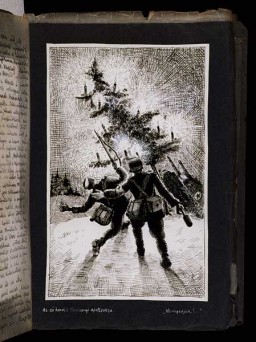
-
German victory parade in Warsaw
FilmGermany invaded Poland on September 1, 1939. The Blitzkrieg ("lightning war") campaign in Poland was short and decisive. Warsaw, the capital of Poland, surrendered on September 27. In early October, Adolf Hitler visited Warsaw to review his forces. This footage shows victorious German army units parading before Hitler in the streets of the devastated city.
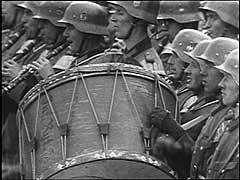
-
Portrait of the Rosenblat family in interwar Poland
PhotoPortrait of the Rosenblat family in interwar Poland. Photographed are: (back row from left to right) Elya, Jozef (father), and Itzik Rosenblat. Sitting from left to right are: Herschel, Deena (wife of Elya), Hannah (mother), and Taube Rosenblat (wife of Itzik). In 1941, a mobile killing unit killed Herschel in Slonim, Poland. Of the others, only Itzik and Deena survived deportation from the ghetto in Radom, Poland.
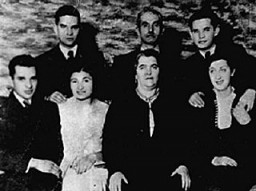
-
Otto Ohlendorf on trial
PhotoOtto Ohlendorf, commander of Einsatzgruppe D (mobile killing unit D), during Trial 9 of the Subsequent Nuremberg Proceedings. This photograph shows Ohlendorf pleading "not guilty" during his arraignment at the Einsatzgruppen Trial. Nuremberg, Germany, September 15, 1947.
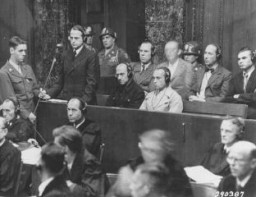
-
Fiorello H. La Guardia while touring displaced persons camps
PhotoFormer mayor of New York Fiorello H. La Guardia, on a tour of United Nations Relief and Rehabilitation Administration (UNRRA) camps in Europe, speaks to survivors. Duppel displaced persons camp. Germany, August 20, 1946.
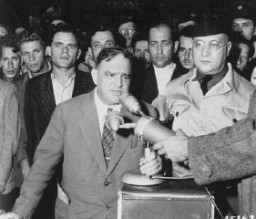
-
UNRRA worker with a survivor of Buchenwald
PhotoA United Nations Relief and Rehabilitation Administration (UNRRA) worker with a survivor of the Buchenwald concentration camp after liberation. Germany, June 13, 1945. The mission of UNRRA was to provide economic assistance to European nations after World War II and to repatriate and assist the refugees who came under Allied control.

-
Jewish displaced persons about to be repatriated to Austria from Shanghai
PhotoGroup of Austrian Jewish displaced persons under the care of the United Nations Relief and Rehabilitation Administration who are to be repatriated to Austria from Shanghai, where they had sought refuge. From the Marine Falcon, they bid farewell to fellow refugees. Shanghai, China, 1946.
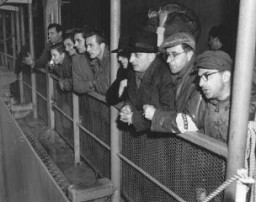
-
Rita Rosani, a member of the Italian resistance
PhotoRita Rosani, a former school teacher who joined the Italian armed resistance immediately upon the German occupation of Italy. She was killed near Verona on September 17, 1944, when her unit was surrounded. Trieste, Italy, 1940.

-
US and Soviet troops meet near Linz, Austria
PhotoMembers of the US 9th Armored Division meet up with Soviet units near Linz, Austria. This photograph was taken by US Army Signal Corps photographer Arnold E. Samuelson. Austria, May 2, 1945.
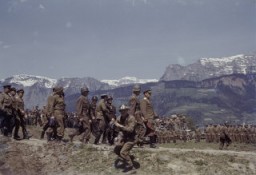
-
US and Soviet forces meet near Linz, Austria
PhotoMembers of the US 9th Armored Division meet up with Soviet units near Linz, Austria. This photograph was taken by US Army Signal Corps photographer Arnold E. Samuelson. Austria, May 2, 1945.
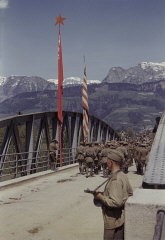
-
US Army Signal Corps photographers
PhotoUS Army Signal Corps photographers from Combat Unit 123 photograph ruins in the city of Naumburg, Germany. Photograph taken by J Malan Heslop. April 10, 1945.
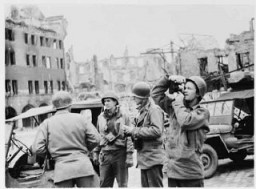
-
11-year-old girl who was a victim of medical experiments at Auschwitz
PhotoUnited Nations personnel vaccinate an 11-year-old concentration camp survivor who was a victim of medical experiments at the Auschwitz camp. Photograph taken in the Bergen-Belsen displaced persons camp, Germany, May 1946.
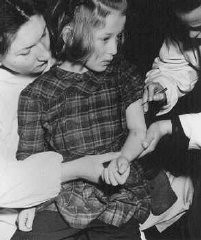
-
Babi Yar massacre
PhotoOn September 29-30, 1941, SS and German police units and their auxiliaries, under guidance of members of Einsatzgruppe C, murdered the Jewish population of Kiev at Babi Yar, a ravine northwest of the city. This photograph shows groups of Jews being forced to hand over their possessions and undress before being shot in the ravine.
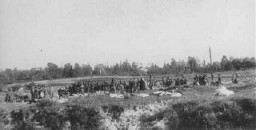
-
Defendant Paul Blobel pleads not guilty at the Einsatzgruppen Trial
PhotoOn September 15, 1947, defendant Paul Blobel pleads not guilty during his arraignment at the Einsatzgruppen Trial. Blobel was the commander of the unit responsible for the massacre at Babi Yar (near Kiev). He was convicted by the military tribunal at Nuremberg and sentenced to death. Blobel was hanged at the Landsberg prison on June 8, 1951.
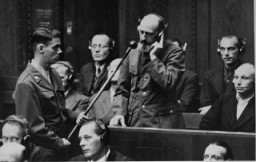
-
Eastern front, February 1944
PhotoUnits of a German armored division on the eastern front in February 1944. Soviet forces, largely on the offensive since the battle of Stalingrad, pushed German troops to the borders of East Prussia by the end of 1944. Soviet Union, February 1944.
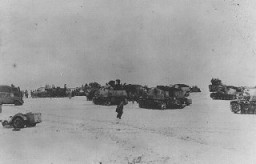
-
Aerial photograph of Auschwitz-Birkenau
PhotoAerial photograph of Auschwitz II (Birkenau). Poland, December 21, 1944. This image is one of a series of aerial photographs taken by Allied reconnaissance units under the command of the 15th US Army Air Force during missions dating between April 4, 1944, and January 14, 1945.

-
1945 portrait of Eta Wrobel
Photo1945 portrait of Eta Wrobel who was born on December 28, 1918, in Lokov, Poland. During the Holocaust, Eta helped organize an exclusively Jewish partisan unit of close to eighty people. She was the only child in her family of ten to survive.
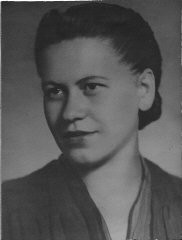
-
Soviet prisoners of war at forced labor
PhotoGerman soldiers force Soviet prisoners of war to construct a rail line. Place uncertain, 1941-1942. This photograph is from an album discovered in a search mission in an abandonend building near Nuremberg by Steven Imburgia while serving with the 633rd Anti-Aircraft Unit.
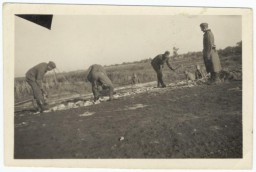
-
Polish Jewish refugees arriving at Babenhausen displaced persons camp
PhotoPolish Jewish refugees arriving at Babenhausen displaced persons camp, where the Joint Distribution Committee and the United Nations Relief and Rehabilitation Administration provided aid. Germany, August 20, 1947.

-
Partisan Groups in the Parczew Forests
ArticleArmed Jewish resistance began in Poland in 1942. Learn more about partisan activity in the Parczew forests during World War II.
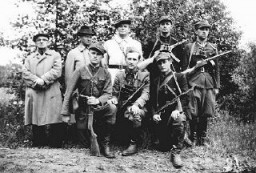
-
Commissar Order
ArticleThe Commissar Order was issued by the German Armed Forces High Command on June 6, 1941. It ordered soldiers to shoot Soviet Communist Party officials taken prisoner.
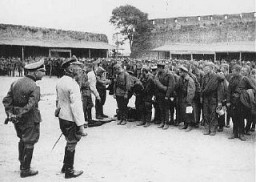
-
Kamenets-Podolsk
ArticleIn August 1941, Kamenets-Podolsk became the site of a mass killing of Jews. This was one of the first large-scale mass murders of the Final Solution.

-
The Holocaust in Odesa
ArticleIn October 1941, Romania, an ally of Nazi Germany, perpetrated mass killings of Jews in Odesa. Learn more about the Holocaust in Odesa and Ukraine.

-
Jewish Uprisings in Camps
ArticleLearn more about Jewish prisoners and the various uprisings and armed resistance movements in killing centers and other Nazi camps.

-
Administration of the Auschwitz Camp Complex
ArticleLearn about the administration and commandants of the Auschwitz camp complex in German-occupied Poland.
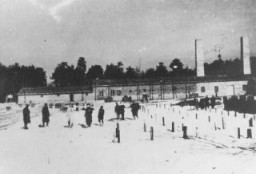
-
Bad Gastein Displaced Persons Camps
ArticleAfter WWII, many Holocaust survivors, unable to return to their homes, lived in displaced persons camps in Germany, Austria, and Italy. Read about Bad Gastein DP camp.
